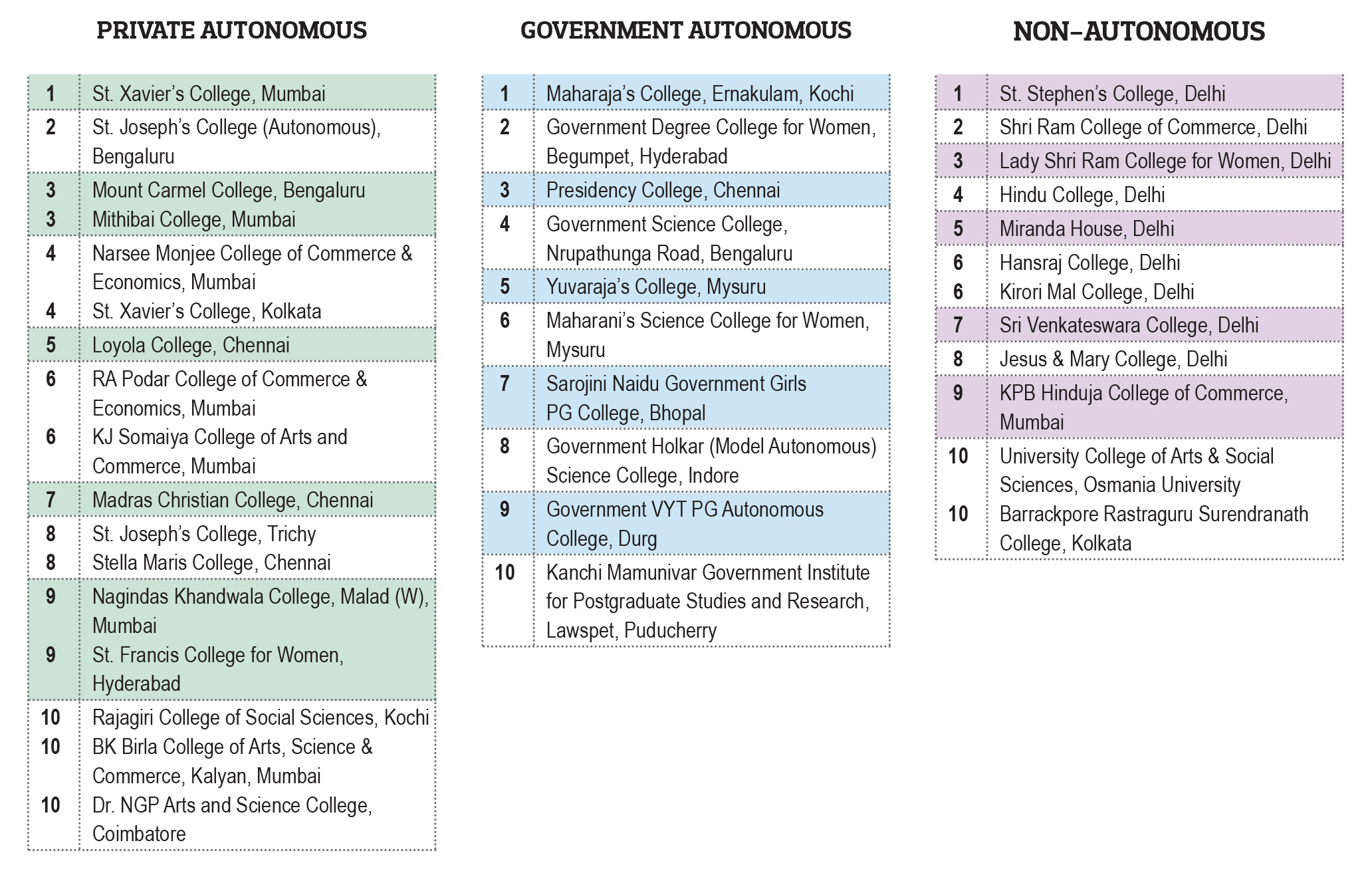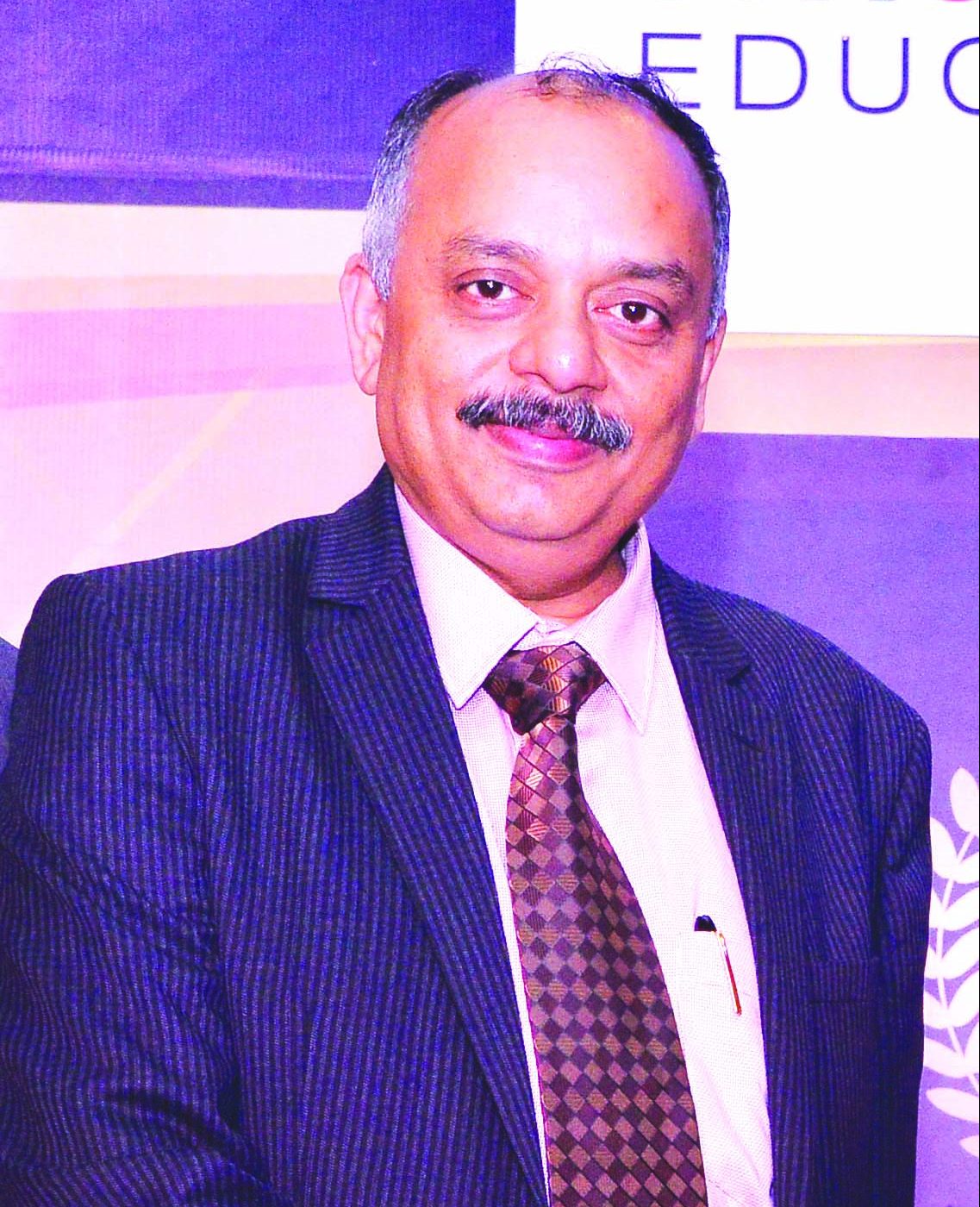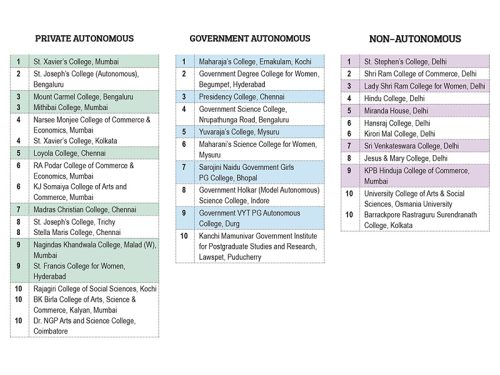Top 500 Arts, Science & Commerce Colleges
Although several newspapers and magazines publish league tables ranking colleges and universities, these are general news publications with peripheral interest in education. Therefore the annual EWIHER, first introduced in 2013, are the best and most reliable rankings available to parents and school-leaving students, writes Dilip Thakore

Grading and ranking higher education institutions has come under a cloud with the dramatic resignation of Bhushan Patwardhan last month from the position of executive committee chairperson of NAAC (National Assessment and Accreditation Council, estb.1994), the highest government agency for rating and ranking undergrad colleges and universities in India.
According to Patwardhan, favourable grades are available to higher education institutions (HEIs) for a price. “Based on my experience, various complaints from the stakeholders, and review committee reports, I had expressed my apprehensions earlier about the possibility of vested interests, malpractices, and nexus among the persons concerned, offering thereby a green corridor by presumably manipulating… processes leading to the awarding of questionable grades to some HEIs. Mainly due to this, I had also suggested the need for an independent inquiry by appropriate high-level national agencies,” he wrote to UGC chairman Jagadesh Kumar on February 26.
This letter calling for an independent inquiry was “misinterpreted” by Jagadesh Kumar as a letter of resignation, and old academic warhorse Anil Sahasrabudhe was appointed chairman of NAAC on March 3. On March 5, Patwardhan formally resigned from his position after making a sincere appeal to the Central government to “institute an independent inquiry in this regard and book those who are responsible for this serious lapse on their part, in the interest of justice to protect my individual rights, dignity, and sanctity of UGC, NAAC, and Higher Educational Institutions in the country.”
This somewhat over-detailed recitation of a top-level resignation at NAAC is likely to evoke wry smiles within knowledgeable monitors of Indian higher education. Because it’s been known for years if not decades, that good NAAC grades could be obtained for consideration. Visiting NAAC assembled task forces comprising retired vice chancellors and senior academics — whose costs of inspection are paid by the assessee institution — are routinely wined, dined and more by the assessee HEIs for high grades. Ditto teams from AICTE and UGC. Indeed as emphasised by your editors in several critiques of the National Education Policy (NEP) 2020 which mandates establishment of a plethora of official committees to supervise higher education — HECI, NAC, NHER, HEGC and GEC — while at the same time mandating institutional autonomy, there is an inherent contradiction in NEP 2020 which may prove a fatal flaw of the policy.
With the education establishment and bureaucracy thoroughly compromised, finding individuals of “unimpeachable integrity” to man these committees and commissions mandated by the Kasturirangan Committee Report on which NEP 2020 is based, sounds like mission impossible. Most likely, positions in these high-sounding committees and commissions will be filled by ruling party faithfuls put out to pasture and not immune to well-phrased inducements.
Be that as it may, it’s highly unlikely that parents/school-leavers searching for suitable colleges or universities are substantialy influenced by NAAC ratings. Even the education establishment has scant respect for NAAC. Since it was established in 1994, a mere 9,062 of India’s 43,796 undergrad colleges and 418 of the country’s 1,113 universities have signed up for NAAC accreditation. Certainly none of the new genre private universities (Ashoka, Amity, Jindal Global etc) has bothered about acquiring NAAC accreditation.
Nor is NIRF (National Institutional Ranking Framework), the latest Union education ministry initiative to rank India’s best universities, any more credible. For instance BITS-Pilani, commonly accepted as a private engineering and science university on a par with the IITs, is routinely ranked below low-profile universities. In the latest NIRF rankings 2022, BITS-Pilani is ranked #32 — below Aligarh Muslim University (#19), Bharathiar University, Coimbatore (24) and Savitribai Phule University, Pune (25), ex facie a ridiculous pecking order. Yet not a squeak of protest from BITS-Pilani’s top brass.
In these circumstances, the most reliable HEI rankings are those compiled by independent private media publications. Leading newspapers and magazines including India Today, Hindustan Times, Business Today etc publish league tables rating colleges and universities under several parameters and rank them inter se.
However these are news publications with peripheral interest in education. Therefore, it is submitted that the annual EducationWorld India Higher Education Rankings (EWIHER), first introduced in 2013, which meticulously make fine distinctions between HEIs to avoid apples and oranges type comparisons, are the best and most reliable rankings available for parents and school-leaving students. In this connection, it should also be borne in mind that the annual EW India School Rankings introduced in 2007, have acquired a golden reputation as the largest and most comprehensive schools ranking league tables worldwide.
To rate India’s most respected Arts, Science and Commerce colleges under six parameters of undergraduate education excellence viz, competence of faculty, faculty welfare and development, curriculum and pedagogy (including digital readiness), placement of graduates, infrastructure and facilities, and leadership/governance quality and rate them in separate, appropriate categories, we commissioned the Delhi-based Centre for Forecasting & Research Pvt. Ltd (C fore, estb.2000), a nationally reputed field research and opinion polls company to interview a nationally representative sample of individuals with good knowledge of India’s higher education sector.
 “Accordingly, we constituted a sample respondents database comprising 1,747 college faculty members and 2,341 final year students with good knowledge of Arts, Science and Commerce colleges countrywide. They were interviewed by our field personnel and asked to rate colleges they were familiar with on a 1-100 points scale against six parameters of undergrad education. The scores they awarded every institute under the six parameters were totalled to rank colleges inter se in every category. Low-profile institutions ranked by less than 25 respondents were eliminated from the rankings,” says Premchand Palety, an alum of Panjab Engineering College and Fore School of Management, Delhi, who worked with ORG — India’s pioneer retail audit company — for over a decade before promoting C fore in the millennium year.
“Accordingly, we constituted a sample respondents database comprising 1,747 college faculty members and 2,341 final year students with good knowledge of Arts, Science and Commerce colleges countrywide. They were interviewed by our field personnel and asked to rate colleges they were familiar with on a 1-100 points scale against six parameters of undergrad education. The scores they awarded every institute under the six parameters were totalled to rank colleges inter se in every category. Low-profile institutions ranked by less than 25 respondents were eliminated from the rankings,” says Premchand Palety, an alum of Panjab Engineering College and Fore School of Management, Delhi, who worked with ORG — India’s pioneer retail audit company — for over a decade before promoting C fore in the millennium year.
Against this backdrop in the pages following, we present league tables rating and ranking India’s Top 500 private and government (which tend to be omitted from ranking league tables of other publications) autonomous and non-autonomous Arts, Science and Commerce colleges. League tables ranking the country’s most respected universities (government and private) and business management institutions will be featured next month in our May issue. Subsequently, top-ranked colleges will be awarded and felicitated in a gala event scheduled to be staged in Delhi in May.

[userpro_private restrict_to_roles=administrator,customer]

















Add comment